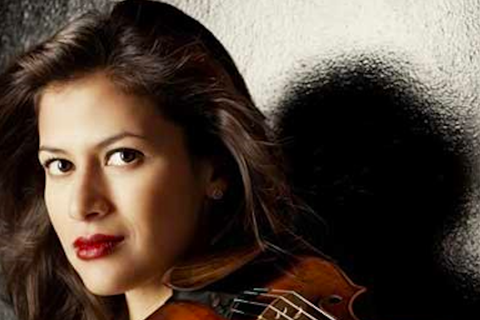The US violinist explains why warming up is an essential part of a day's practice

The following piece from our archive is linked to the Technique article in the March issue of The Strad on warming up the bow arm when playing the cello
Slow, relaxed practising intimately acquaints one's body with one's instrument, instead of pitting the two against each other through mindless repetition. First, however, the body must be suitably prepared to meet the rigorous demands of playing.
Here I make a quick diversion out of the practice room and into the yoga studio, because I am of the firm belief that the practice of yoga is one of the best gifts musicians can give themselves. Yoga warms and lengthens the muscles, making the body more pliable and thus more resilient.
Musicians are a specific type of athlete, and we often tend to brush aside the physical demands of our instruments, discounting them as tertiary to ‘thoughts’ and ‘feelings’. The fact is, without the proper tools to express everything we wish to convey through our music, our thoughts and feelings remain trapped inside of a potentially rigid, contorted shell of a body.
Athletes would never dream of performing their various acrobatics without first properly conditioning their bodies – why should musicians, who spend hours each day making intense, repetitive motions, treat themselves any differently?
Even if yoga isn't exactly up your alley, proper blood flow, an awareness of breath, and malleable muscles are vital to an effective practice session or performance. Before even taking my violin out of its case, I make sure to stretch every part of my arms and back. I roll my neck slowly in all directions and I make gentle, progressively widening circles in the air with my arms. When I feel properly limber and like blood is coursing to the tips of my fingers – only then do I reach for my instrument.
Multitasking has never been my forte, and my warm-up routine is no exception. To ensure that my hands are in tip-top shape, I work each one separately. For my left hand, I begin with the first exercise in Ševcík Part One (my right hand dangling happily at my side, bowless), feeling the relaxed strength in the bounce of each finger and enjoying the little ‘thump’ each one makes against the fingerboard. I follow up with a few lines of Kreutzer’s Etude no.9, making sure I involve my fourth finger in as many of the patterns as possible.
I often joke that my left little finger is purely ornamental, but I am determined to utilise and strengthen it, little by little! I continue trilling various combinations of fingers until they feel warm, powerful and relaxed, and then I move on to vibrato exercises. Placing my wrist right where the fingerboard meets the body of the instrument, I use the wrist to propel the first joint in each finger to wiggle – first once forwards, then once backwards, then two times forwards, then two times backwards, and so on. Eventually the first joint of each finger is loose enough to wiggle in rapid succession, and two or three repeated oscillations melt into a continuous, measured vibrato.
I retrieve my bow and move on to the right hand, beginning with slow open strings. I experiment with bow speed and weight, really familiarising myself with how my hand feels on the bow and the bow feels on the strings. I pretend that my hand is pawing at the strings directly (unlike most other musicians, string players have the disadvantage of having something intercepting their bodies and their instruments).
I make sure that I am invested, physically and emotionally, in every inch of the sound. I practise smooth bow changes, keeping my right hand as still as possible at the frog and making sure it has enough leverage to maintain contact at the tip. I don't subscribe to the notion that fancy finger or wrist motions are necessary to change the bow smoothly – when the down bow is over, switch directions; when the up-bow is over, switch directions.
To tie the two hands together, I play two-fingered scales: with continuous vibrato, I use only the first and second fingers of my left hand to play simple scales in first and third positions, feeling a warm current connecting the vibrato from each finger to the next, my bow continuing to carve out different depths of sound from the strings. I switch to my second and third fingers, then third and fourth: finally, I feel properly warmed up, connected to my instrument, and ready to melt into my repertoire for the day.
And a little stretching after a practice session never hurts, either.
Reference



































No comments yet